Turning Crisis into an Opportunity: Technologies Powering Sustainability Transformation
March 16, 2023
Japanese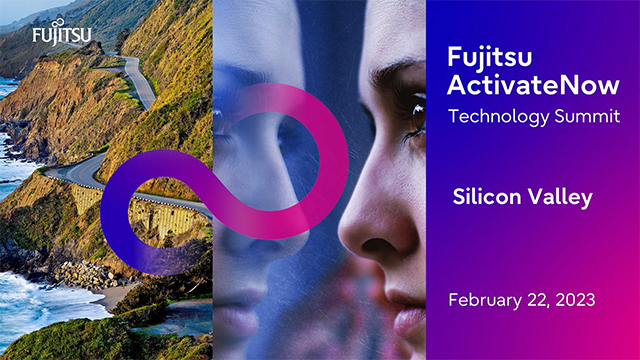
On February 22, 2023, Fujitsu held a global technology event, Fujitsu ActivateNow Technology Summit, Silicon Valley 2023, in Mountain View, California. The theme was "Turning Crisis into an Opportunity: Technologies Powering Sustainability Transformation”. Held as an annual event, the technology summit focused on the dynamic role of advanced technologies in driving sustainability transformation through digital innovation. The event included compelling keynotes, thought-provoking panel sessions, and insightful technology demonstrations.
Topics at the summit included how to efficiently manage cutting-edge computational processes such as high-performance computing (HPC) and quantum computing, the role of artificial intelligence in driving sustainability, and the emerging impact on web 3.0 technologies. Held at the Computer History Museum, famous for the incomparable collection of computing artifacts and oral histories to inform and empower, leaders from the rich Silicon Valley innovation ecosystem were able to network and share ideas and experiences to build a better world.
Fujitsu's Five Key Technologies
In his opening remarks, Fujitsu CTO Vivek Mahajan explained Fujitsu's overall strategy. "Our purpose can be be summed up in 3 keywords: innovation, trust, and sustainability," he began. Innovation is not possible without technology, and business will not be viable without future-oriented trust from customers for sustainability, including resilience. Therefore, research conducted internally is so important, he said, and the technology that emerges from it is the key to turning crises into opportunities.
Fujitsu decided 18 months ago to focus on five key technology areas for the future. They are Computing, Network, AI, Data & Security, and Converging Technologies. Converging technologies combine the human use of these technologies in business and society, which requires knowledge from the social, philosophical, and behavioral sciences. Vivek said, "Customers now don't just chose technology partner based on its name. They choose based on how good a viewpoint the technology has," referring to the current approach to business.
As for the computing field, it is clear that quantum computing will drive the next generation of innovation, but there is no stable hardware at this time. On the other hand, many advances are also taking place in HPC, such as Fujitsu's 2nm semiconductor design. He emphasized that the future should focus on hybrid use of HPC and quantum computing, and that HPC can also further expand its use cases. In this context, he presented optimization solutions using the Digital Annealer and the 39-qubit quantum simulator that has been successfully developed, which is now in the practical stage, and introduced examples such as system optimization at the Port of Hamburg.
As for the AI field, he says that at this point only 1% of its potential has been put to practical use, and that future developments are enormous. As a platform to promote innovation, Fujitsu identified Graph AI that makes decisions based on relationships, AI that can explain and predict causal relationships using human logic, and AI trust that ensures ethics and security. In the security field, he said that Web 3.0 technology will be used to co-create use cases together with customers. In the area of network he noted that networks are becoming cloud-based, where the functions of distributed and integrated devices are virtualized, and that 6G research is exploring technologies that integrate electronic engineering and optical communications science. Finally, Vivek emphasized once again the importance of converging technologies. Converging technologies can be used to digitally rehearse policies. Feedback from the simulations will play a key role in issues such as how to reduce carbon emissions without compromising transportation, and how to plan cities for both peacetime and emergency situations. The city of Kawasaki is already planning to build an ecosystem with the goal of becoming a smart city, and Fujitsu is involved.
Fujitsu has research centers in North America, India, China, Europe, and Israel, and is conducting joint research with leading universities around the world, which Vivek said he sees as a single research organization. The pace of innovation is fast," he concluded, "and we need talent from all over the world.”
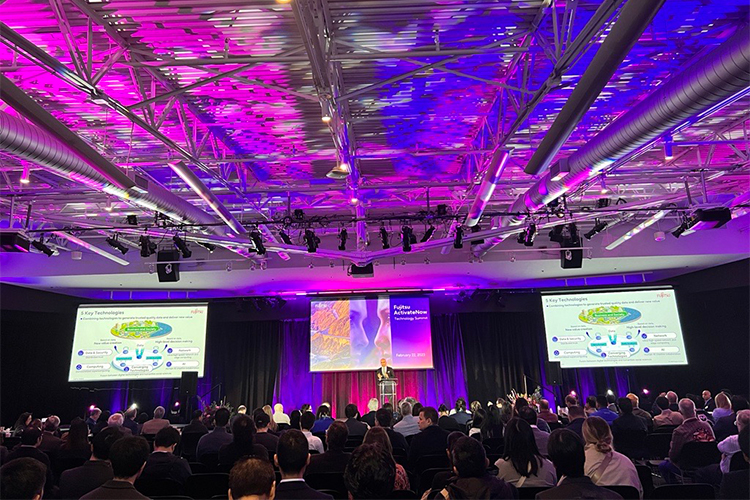
A New Golden Age of Computer Architecture
The Fujitsu ActivateNow Technology Summit, Silicon Valley 2023 featured 2 keynote presentations. Both look back on the history of computers and look ahead to the future. The first talk was given by Professor Emeritus David Patterson of the University of California, Berkeley.
From 1982 to 1983, Professor Patterson directed the VSLI project, which later pioneered the RISC processor, between UCB and ARPA, the predecessor of DARPA (Defense Advanced Research Projects Agency). In 2017, he was awarded the Turing Award, the Nobel Prize of the computer world, along with John Hennessey, former president of Stanford University. The theme of his talk was “A New Golden Age for Computer Architecture: History, Challenges, and Opportunities.”
After reviewing the development of computer architecture from 1960 to 2010, touching on microprogramming, CISC, RISC, and microprocessor development, Professor Patterson said that we are now in the post-Moore's Law era and that we can no longer expect evolution as before. While companies have continued their efforts in chiplet development, multi-core and DSA (domain specific architecture) development, a new golden age is now opening up.
It is AI, specifically the introduction of neuron-based machine learning, which uniquely learns from vast amounts of data, into programming. The professor explains, "In other words, it's easier to make a program itself smarter than it is to write a program that makes a computer smarter." To obtain the vast computing power needed for this, Google developed a Tensor Processing Unit (TPU) specialized for machine learning in 15 months, and since then, companies have begun to develop similar DSAs, a move that will have a significant impact, he said.
The last issue that Professor Patterson addressed was the amount of computing required by machine learning and its carbon footprint. Looking just at the computational cost-performance curve for a training model image recognition, achieving a 5 percent error rate would require 10 19 billion floating-point operations. Training such a model would cost US $100 billion and would produce as much carbon emissions as New York City does in a month.
On the other hand, he also mentioned means by which emissions can be reduced through the efforts of those involved, by following the"4Ms": improving the learning Model, switching Machines to the latest GPUs (Graphics Processing Unit) and TPUs (Tensor Processing Units), streamlining the data center Mechanism, and choosing the best location on the geographic Map. Achieving this best practice can improve the energy efficiency of machine learning by nearly 750X while reducing energy consumption by 100X and greenhouse gas emissions by 1000X. Professor Patterson's talk provided a bird's eye view of the history and outlook of computing and pointed developers to valuable points.
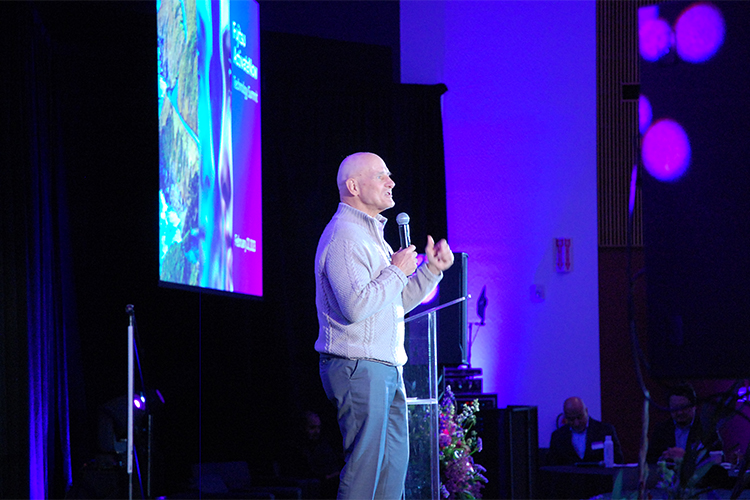
Various Approaches to Achieving Sustainability with Technology
This was followed by three panel sessions. All illustrate approaches to using technology to achieve sustainability and are eye-opening in their diversity.
The theme of the first panel session is “Role of Computing in Enabling Next Generation Sustainability Initiatives.”
The discussion here was from two perspectives: how to manage computing itself sustainably, along with the optimization and efficiency benefits it brings to science.
One of the panelists, William Thigpen of NASA (National Aeronautics and Space Administration) Ames Research Center, has been responsible for the operation of the HPC used at the laboratory. He explained that NASA's HPC systems are known to use 25 % of their power consumption for cooling, and that to reduce this, he described a modular design that cools the inside of the data center by incorporating outdoor air. Currently in the prototype stage, it is an interesting experiment.
Ammonia is a material widely used for fertilizer and industrial applications and is expected to be used as a fuel in the future. Atmonia, based in Iceland, is developing electrolysis equipment for the clean production of ammonia. A joint research project with Fujitsu is currently in progress to discover the best catalyst to add to air and water. “We want to use computational chemistry to simulate chemical reactions to achieve simple ammonia production," said company CEO Guðbjörg Rist.
Sarvagya Upadhyay, Principal Researcher at Fujitsu Research of America, stated that Fujitsu is combining HPC, quantum-inspired technologies including digital annealers, and quantum computing to solve complex social problems and explained the current status of R&D and applications. In the field of quantum computing, Fujitsu has established a collaboration center in 2021 to conduct joint research with RIKEN and hopes to complete a 1,000-qubit class superconducting quantum computer by 2026.
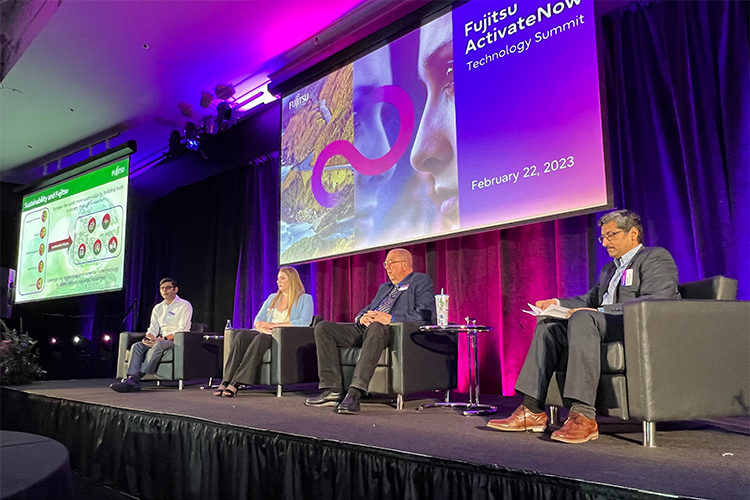
The second panel session in the afternoon was themed "Impact of AI on the Future of Sustainability Transformation". The main topic of discussion was technology for sustainability in business and social aspects.
Professor Guido Imbens, who teaches at the Graduate School of Business, Stanford University and is the 2021 Nobel Laureate in economics, has been involved in such things as unraveling causal relationships and translating them into policy, but he says AI will play a major role in cases where traditional experiments cannot be conducted, and in social events involving complex factors, as in recent years. He offered the insight that to achieve sustainability, AI can also be effective in realizing "small efficiencies that people cannot pay attention to," for example, turning off lights by guessing when people will not be around.
LARUS, a developer of Graph AI software that brings to light a wide range of social correlations, is currently collaborating with Fujitsu on a platform with explainable AI, and is working on detecting fraudulent transactions, among other things. “Sustainability is a complex interplay of many factors, and the fact that data is siloed further hinders its solution," said Lorenzo Speranzoni, CEO of LARUS. In this context, he states that he is hopeful that we are beginning to see the use of Knowledge graphs to relate many findings, such as the AMICa(*1) project being promoted by the Technical University of Denmark.
Hiro Kobashi, Project Director of Artificial Intelligence Laboratory at Fujitsu Research of America, said that AI contributes to sustainability in automation in design, manufacturing, and quality control operations, as well as in discovery, such as the discovery of catalysts at Atmonia, mentioned above. The impact of cost and workforce savings is significant.
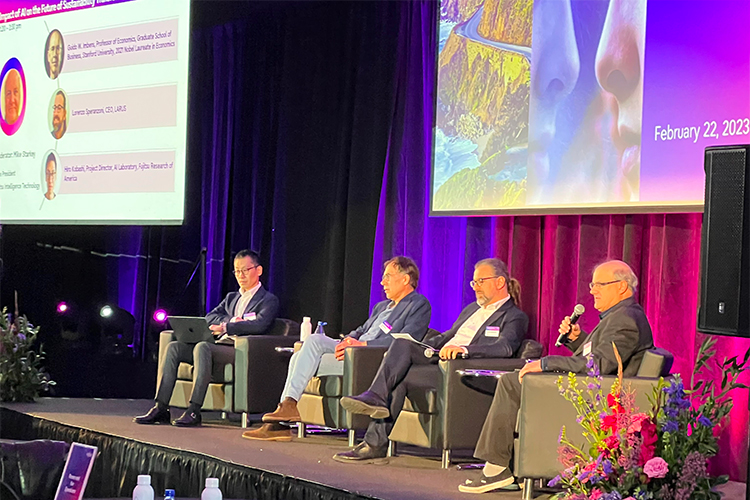
How Web 3.0 will Contribute to the Realization of Sustainability
The third and final panel session was a discussion on "Web 3.0 Powering Next Generation Sustainability Initiatives".
A group from the Hyperledger Foundation, the Hyperledger Climate Action Accounting Special Interest Group(*2), is promoting the development of a Hyperledger (distributed ledger) mechanism for corporate climate action and climate audit reporting. The foundation is supported by the Linux Foundation, which has the fastest project growth of any Linux foundation due to the promise of Hyperledger. Also, it is beginning to be applied in a wide range of fields, including finance, medicine, and manufacturing.
Hart Montgomery, CTO of the foundation, explains, "The ability to securely exchange data between companies that do not trust each other through a universal truth data space is the hallmark of Hyperledger.” In the climate action and climate audit reporting projects, data from the entire supply chain, including even suppliers, can be collected, and based on these digital assets, an efficient marketplace can be created, including government and markets, with decentralized governance as well.
Heather Dahl, CEO of Indicio, which develops enterprise-level solutions that make Hyperledger easy to use, said that establishing trust has been very inefficient and ineffective in the past, but Hyperledger ties data to identity and she says that the quality of data and analytics has improved, which will be an immense help in addressing sustainability challenges.
Indradeep Ghosh, CEO of Fujitsu Research of America, described the "Fujitsu Web3 Acceleration Platform" developed by the company. "Fujitsu Web3 Acceleration Platform" is designed to accelerate the transition to a trustworthy digital ecosystem by co-creating trust, blockchain, and computing capabilities as a service (CaaS) for free to partner companies.
The session drew numerous questions from the audience, indicating an elevated level of interest.

Evolution and the Future of HPC
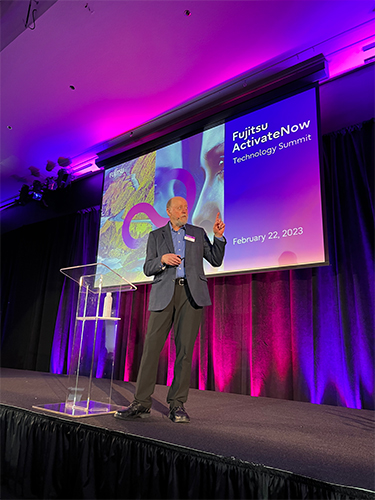
The final keynote address, given by Professor Emeritus Jack Dongarra of the University of Tennessee, Knoxville, was on the evolution and future issues of HPC. He is best known for devising the LINPACK benchmark, which has become a key indicator in the "Top 500," measuring HPC performance since 1993.
Professor Dongarra said that HPC is now approaching a tipping point. The background is that it costs a great deal to improve performance, and transistors are becoming more expensive as Dennard’s and Moore's laws are no longer valid. On the other hand, top-class HPC has become an indispensable tool in scientific computing, whether for climate prediction, simulation of materials development, or digital twin. After describing typical HPC systems, such as Frontier developed by Oak Ridge National Laboratory and Hewlett Packard Enterprise, Fugaku, jointly developed by RIKEN and Fujitsu, and HPC reportedly under development by China, he mentioned that with the introduction of AI, new players such as Google and Amazon are beginning to create hardware ecosystems. These firms also have a corporate valuation that is several to ten times higher than that of traditional HPC development firms. He said that a future in which these companies are involved in scientific computing is desirable, but that the challenge is how to increase commercial incentives for HPC, which has become a large-scale scientific instrument.
Now, the Fujitsu ActivateNow Technology Summit is also an opportunity to introduce the major research being conducted at Fujitsu. A total of 16 showcases were presented to the public this year in the 5 strategic areas of Computing, Network, AI, Data & Security, and Converging Technologies mentioned above, as well as in co-creation with startups.
The "Social Digital Twin" is an attempt to find optimal solutions to social problems involving complex elements by integrating actual data and human behavior models and digitally rehearsing them. The demonstration included a presentation on how road tolling correlates with carbon emissions and convenience for people.
In addition, "Actlyzer", Fujitsu’s technology for behavioral analysis, showed a system that can determine what people are doing from their movements. A model that has been deeply learned in advance recognizes about 100 basic behaviors and can determine behavior based on a combination of these behaviors. It is expected to be used in a wide range of fields, including healthcare and manufacturing.
Standing on the history of computer evolution, we can see new possibilities emerge with the tipping points of technologies. “Fujitsu ActivateNow Technology Summit, Silicon Valley 2023" was an event that made us realize that cutting-edge technologies can play a significant role in critical areas such as people, society, and the environment.
Author
Noriko Takiguchi
Takiguchi, based in Silicon Valley and Japan, writes extensively about technology, business, politics, international relations, design, and architecture. A special focus of her work has been trends in robotics in Silicon Valley and elsewhere in the United States. She publishes news about robotics through her own website robonews.net. Her books include: Why is Garbage Not Sorted in Silicon Valley? (President Inc.), The Rem Koolhaas File (TOTO Publishing), and Toyo Ito, Architect Japan (Chikumashbo Ltd.). She also has translated such works as Machine of Loving Grace by John Markoff (Nikkei BP), Bringing Design to Software by Terry Winograd (Pearson Education) and Leading Matters by John L. Hennessy (Diamond Inc.). She graduated from Japan’s Sophia University, majoring in German Studies and International Relations. From 1996 to 1998, she was a Fulbright visiting scholar at Computer Science Department of Stanford University.



